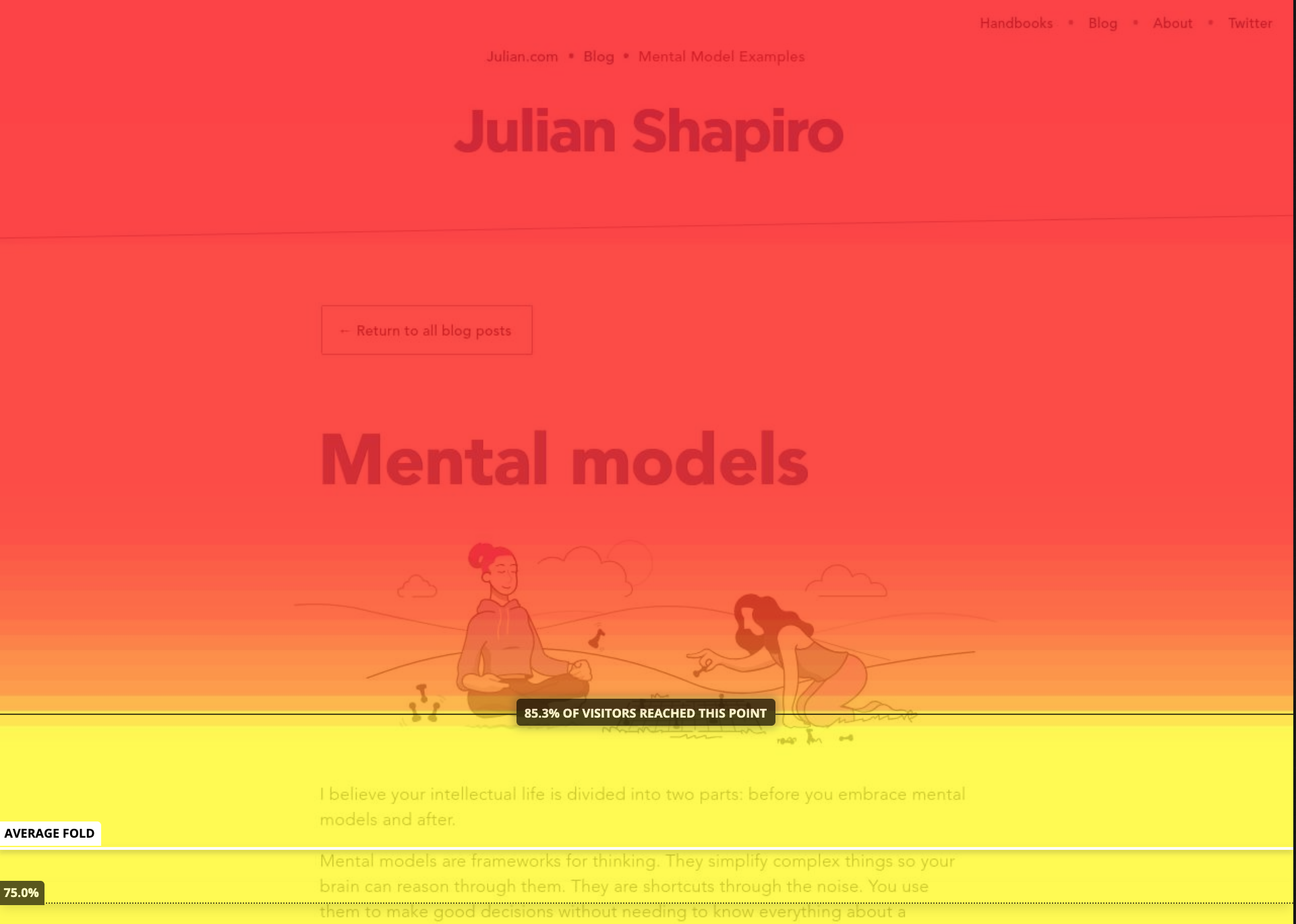The secret of content marketing: avoid high bounce rates
- How to see another company's growth tactics and try them yourself
- How do you hire a great growth marketer?
Advice on content marketing always talks about getting people to your blog.
But, what about once they're there - how do you get them to then buy from you?
That's the conversion half of content marketing, and that's what I'll cover: converting your readers into paying customers.
First, they read. Then, they buy.When visitors arrive on your blog, three things should happen:
- First, they must start reading - instead of bouncing.
- Next, keep should keep reading until at least halfway through.
- Finally, they should be enticed to read more or convert: sign up, subscribe, purchase, etc.
Demand Curve's data shows that when readers complete this full chain of events - as opposed to skipping step #2 - they're more likely to ultimately buy from you.
Why? People trust your brand more after they've consumed your content and deemed you to be high quality and authoritative.
We've optimized tens of millions of blog impressions, and we have three novel insights to share in this post. Each will hopefully help compel readers to stick around and buy.
Let's conquer high bounce rates - the bane of content marketers.
Entice visitors to start readingFirst, some obvious advice: Getting visitors to read begins with having a strong intro.
A good intro buys goodwill with readers so they keep reading - and tolerate your boring parts.
There are three components to a good intro:
- Have a hook. Read about hooks here.
- Skip self-evident fluff. Read about succinctness here.
- Tease your subtopics to reassure visitors they landed in the right place.
The web's biggest blogs include tables of contents at the top of their posts to reassure readers. It not only benefits SEO, it also improves read-through rates.

Image via Getty Images / z_wei
Keep them reading once they've startedOnce visitors begin reading, you have three tactics to retain them:
- Drop-off optimization.
- A/B testing.
- Exit rate analysis.
This is how we'll improve our read-through and conversion rates.
Drop-off optimizationSometimes, when I write a post on Julian.com, I find few people actually finish reading it. They get halfway through then bounce.
I discover this by looking at my scroll-depth maps using Hotjar.com. These show me how far down a page an average reader gets. Then I pair that data with the average time spent on the page, which I get from Google Analytics.
Whenever I notice poor read completion rates, I spend ten minutes optimizing my content:
- I refer to the heatmaps to see which sections caused people to stop reading.
- Then I rewrite those offending sections to be more enticing.
This routinely achieves 1.5-2x boosts in read-through rates, which can lead to a similar boost in conversion.
You see, I never just publish a blog post then move on.
I treat my posts the same way I treat every other marketing asset: I measure and iterate.
For some reason, even professional content marketers publish their posts then simply move on. That's crazy. Not spending 10 minutes optimizing can be the difference between people devouring your post or not being able to get halfway through.
Specifically, here's the process for rewriting a post's drop-off points to get readers to continue reading.
How to perform drop-off optimization
Image via Julian Shapiro / Julian.com
First, record a scroll heatmap of your blog post. Any heatmap tool will do. I use Hotjar.com.
Next, whenever you see, say, 80% of readers getting midway into your post but only a fraction then make it to the end, you know you have a problem in the back half of your post: it's verbose, uninsightful, or off-topic.
Your job is to find these drop-off points then rewrite the offending content using four techniques:
- Brevity: Make the section more concise: Cut the filler and switch to a bullet list like the one you're reading now. Or, delete the section altogether if it's not interesting.
- Inject insights: Perhaps your content is self-evident and boring. Rewrite it with novel and surprising thoughts.
- Make headlines enticing: Make the next section's headline more enticing. Perhaps readers bounce because they see that the next section's title is boring or irrelevant. For example, instead of titling your next section "Wrapping up," re-write it into something more eyebrow-raising like, "What you still don't know."
- Cliffhangers: End sections with a statement like "Everything I just told you is true, but there's a big exception." Then withhold the exception until the next section. Keep them reading.
Once you've ironed out drop-off points, perhaps 35% of your readers finish the post instead of 15%. This reliably works, and it's the highest-leverage way to achieve conversion improvements on your posts.
This is so self-evident yet no one does it for some reason.
And we're only just starting. There's another, more effective technique for optimizing your content: A/B testing paragraphs. Whereas drop-off optimization irons out the kinks in your article, A/B testing is how you take your read-through rates to a new tier.
Before we begin, follow alongAs we explore the tactics below, you're welcome to visit two blogs that incorporate these techniques:
If you need a primer on SEO before continuing, see my other TechCrunch article on the topic here and this orientation here.
A/B testing contentA/B testing is the process of creating a variation of existing content to see if it will increase conversion.
You want to A/B test the three highest-leverage components of every post: